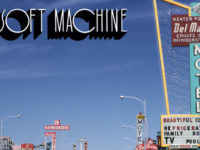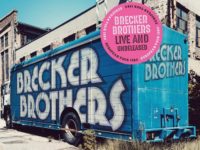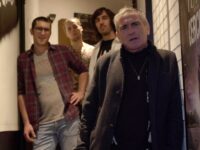Is it jazz, or just fusion? As though labels really matter. Recent albums by Dr. Mike Bogle and Charged Particles show the question is trivial at best, and ultimately irrelevant.
These two outings offer contrasting styles with some key commonalities. Both find surprises in their selections and in their instrumentation. First, Let There Be Light by Dr. Mike Bogle includes not only keyboards by the leader, as well as bass and drums (Buddy Mohmed and Harrell Bosarge, respectively), but also features vibes and steel pans.
It might seem that keyboards, steel drums and vibes occupy much of the same sonic space, and thus are likely to bump into one another. Yes, and no. The pieces are arranged in such a way that the instruments complement each other and the songs.
The opening “Voyager’s Dream” makes it obvious that the instrumentation perfectly fits Bogle’s compositions. It starts with an insistent piano riff, soon joined by the steel drums in counterpoint with the melody. The density builds with overdubbed piano and leads into a vibes solo by Dana Sudborough, before Bogle takes his turn. Then Andy Barrus shows how steel pans can indeed make an ideal jazz instrument.
The three solos aptly demonstrate the instruments’ and the players’ strengths. They stand apart from one another, with the jewel-like tones of the vibes leading into the piano. Dr. Mike Bogle’s light touch and flourishes elevate the song further. Barrus’s steel drums recede a bit in the mix, allowing the listener to either dig in or simply let the music wash over you.
Mohmed also gets a turn in the spotlight. His solo is actually the least satisfactory of the four, perhaps because his timbre is so trebly – at this point, the sameness of the sound spectrum does become a bit bothersome.
Bogle’s wordless vocalizing on the title track from Let There Be Light adds to the proceedings, rather than detracting from the music. Here Mohmed solos in a similar style to “Voyager’s Dream,” but uses the whole of the instrument to much greater success.
What by now seems as might be an exclusively an acoustic outing is belied by the electronic textures on the third track, “Eat Your Vitamins.” Bogle’s processed vocals lead into a vibes solo before Bogle pulls out his trombone, with plenty of reverb. Drummer Bosarge gets his place in the spotlight as the synthesizer and Mohmed’s electric bass slice through the dense mix.
For all their individual prowess, the star of the show isn’t the musicians’ showy solos, but the strength of the sinewy melodies and the way they dance around them. It’s clear all the musicians are in service to the songs.
Though the sonics are dissimilar, the approach on the new effort by Charged Particles isn’t that different. The album is an homage to Michael Brecker, but the band – in particular saxophonist Tod Dickow – wisely uses the tenor titan as an inspiration rather than trying to simply imitate him.
Over the 25-plus years of the band’s existence, Charged Particles has morphed from a Midwest fusion trio to a Bay-area band that splits the difference between acoustic and electric. The current iteration of the trio features founding member Jon Krosnick on drums, keyboardist Murray Low, and Aaron Germain on electric and acoustic basses. They began working together in 2011.
On Live at the Baked Potato, Charged Particles demonstrate that Brecker’s undeniable prowess as a musician sometimes overpowered the public perception of his compositions. Dickow and the band dig into Brecker’s tunes with gusto, from music dating back 30 years ago to Brecker’s final recording, Pilgrimage, released months after his death in 2007.
Which is not to say that the tunes are the only stars here. All four members of Charged Particles use Michael Brecker’s compositions to demonstrate their own skills and listening ability. On the opening “Peep,” from Brecker’s 1990 album Now You See It … (Now You Don’t), Krosnick sets the mood with cymbal splashes and tom tom rolls, before Germain’s fluid electric bass enters. Dickow takes the melody with Low’s piano and then synths provide backing for the saxophone showcase.
That’s the case through the album, all four musicians reveling in the music, supporting and clearly enjoying one another. Even with Dickow out front, Low commands “The Mean Time” with his perceptive comping. When it’s his turn to shine, he’s as sensitive as when backing Dickow’s explorations. He takes the song in a completely different direction, and when like Dickow he shifts into an uptempo swing, the rhythm section of Krosnick and Germain are right there with him.
“Slings and Arrows” finds Dickow all over the horn, while “Talking to Myself” offers a haunting change of pace. Here again, Low shows a command of mood. “Song For Barry” concludes Live at the Baked Potato on a high note, with Dickow again – still – in fine form, with his sax and keys chasing each other to the very end.
Both of these recordings showcase outstanding playing in a variety of styles. Go ahead, label it fusion, or dub some of it straightahead. Maybe a couple tracks could even find favor on a smooth jazz station. But mostly, just call it enticing, enjoyable contemporary jazz.
- Jon Anderson, Reza Khan, CSNY + Others: Ross Boissoneau’s Best of 2024 - December 30, 2024
- Tower of Power, Jennifer Hudson, Ben Folds + Others: 2024’s Seasonal Sounds - November 25, 2024
- Dave Bainbridge of Downes Braide Association: The Albums That Shaped My Career - October 9, 2024




